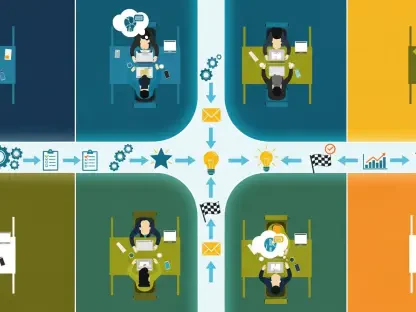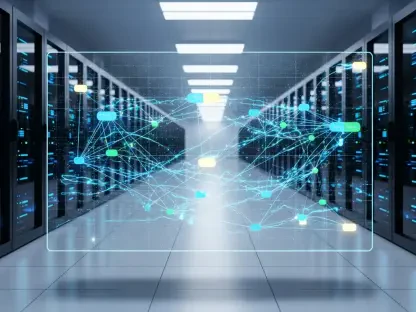With decades of experience in management consulting, Marco Gaietti is renowned for his profound insight into business management, strategic operations, and customer relations. Today, we delve into the cybersecurity landscape with him, reflecting on how Cytactic navigates complex challenges through innovative strategies.
Can you describe the specific pain points in the cybersecurity industry that Cytactic is uniquely positioned to solve?
Cybersecurity is rife with complexities, such as the difficulty in quantifying risk exposure and preparing for unforeseen crises. Cytactic addresses these by offering a platform that integrates AI for real-time decision-making and predictive analysis, enabling businesses to anticipate and adapt effectively to threats rather than simply react to them.
How does Cytactic connect crisis readiness with actual risk exposure?
Cytactic uses sophisticated algorithms to map out potential vulnerabilities and simulate crisis scenarios. This approach does more than just prepare teams; it empowers them to understand their risk landscape thoroughly and tailor crisis strategies that reflect real-world threats, ensuring readiness translates into actionable insights.
In what ways does Cytactic help organizations move from theoretical preparedness to practical resilience?
The shift from theoretical to practical resilience involves adopting a holistic approach where organizations seamlessly integrate crisis management into their daily operations. Cytactic’s platform facilitates this by providing tools for proactive planning and instant response capabilities, ensuring teams can act decisively during emergencies.
Could you elaborate on what “practical resilience” means in the context of cybersecurity?
Practical resilience is about building a foundational ability to respond and adapt quickly to cyber threats, minimizing disruptions. It’s the capacity to maintain operations under attack, leveraging strategic data fusion and expert manpower to uphold business continuity and secure critical assets.
How does Cytactic use AI to empower organizations during cyber crises?
AI in Cytactic’s platform acts as a strategic advisor, offering predictive analytics and automated decision-support tools. It learns from past incidents and applies this knowledge to current threats, continually enhancing the organization’s ability to mitigate crisis impacts swiftly and efficiently.
What roles do data fusion and predictive capabilities play in Cytactic’s platform?
Data fusion allows Cytactic to consolidate information from disparate sources, creating a comprehensive view of the threat landscape. Predictive capabilities further extend this by forecasting potential challenges and providing strategic insights that guide timely interventions, thus fortifying defense mechanisms.
How does the platform support smart decision-making and real-time coordination during a crisis?
Through coded expertise and digital orchestration, Cytactic enables synchronized efforts across departments. Real-time data analytics inform strategic choices, while streamlined communication ensures all team members are aligned and responsive, thus enhancing coordination under pressure.
Can you explain the importance of bridging the gap between technical expertise and strategic decision-making, and how you contribute to this at Cytactic?
Bridging this gap is crucial for cohesive crisis management. At Cytactic, we focus on enhancing the user interface and experience to make complex technical data accessible to decision-makers. This integration helps leadership teams make informed decisions rapidly, leveraging both technical insights and strategic foresight.
Given your background in leading cyber-oriented missions, how do you approach product development at Cytactic?
Drawing from tactical experiences, I prioritize resilience and innovation in product development. We focus on user-centric designs that not only meet but anticipate client needs, ensuring our solutions remain robust in evolving threat environments and user expectations.
How does your experience as an IDF officer influence your current work in product development?
My military background instilled a disciplined approach to crisis management and technology integration. It’s about creating agile, responsive systems that hold under stress. This mindset directly informs how I architect products that embody resilience and efficiency at Cytactic.
What are some of the key elements of a seamless customer experience that you focus on during product innovation?
User engagement and intuitive design are pivotal. We strive for solutions that clients can easily navigate, ensuring the technology enhances their workflow. Constant feedback loops and adaptive learning models help us refine our products to fit the evolving needs of our clients.
Could you share insights on how you define a product roadmap?
Defining a product roadmap requires aligning innovation with customer goals. It’s about identifying future challenges and crafting pathways that lead to solutions. We use data-driven insights to prioritize developments that promise strategic value and practical benefits for our clients.
How does your education from the Lautman Excellence Interdisciplinary Program at Tel Aviv University shape your approach to technology and innovation?
Education from the Lautman program equipped me with a multidisciplinary lens through which I view technology. It encourages a synthesis of diverse ideas and fosters adaptability, crucial for driving innovation and crafting versatile solutions in dynamic fields like cybersecurity.
Can you discuss the importance of having a strong tech foundation to face a cyber crisis?
A strong tech foundation is indispensable; it supports resilience and rapid recovery. It means having reliable systems in place that can withstand penetration attempts and facilitate swift restoration of services, thus maintaining business integrity and customer trust.
What strategic decisions have you made at Cytactic to enhance readiness and management processes for cyber crises?
Strategically, we’ve invested in developing predictive analytics and real-time response mechanisms to enable comprehensive threat assessment. We focus on empowering teams with training and tools that simulate crisis conditions, ensuring they’re equipped to handle actual events.
What advice would you give to other companies aiming to improve their crisis management strategies?
Investing in an AI-driven platform that empowers proactive discovery and response is crucial. Companies should prioritize ecosystem integration, fostering a culture of collaboration across departments to ensure swift and effective action during crises.









